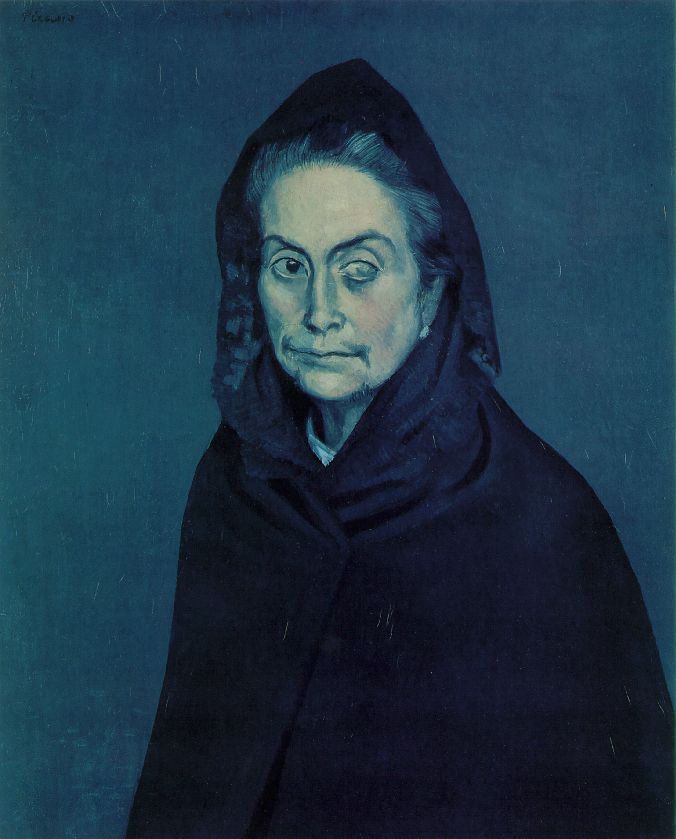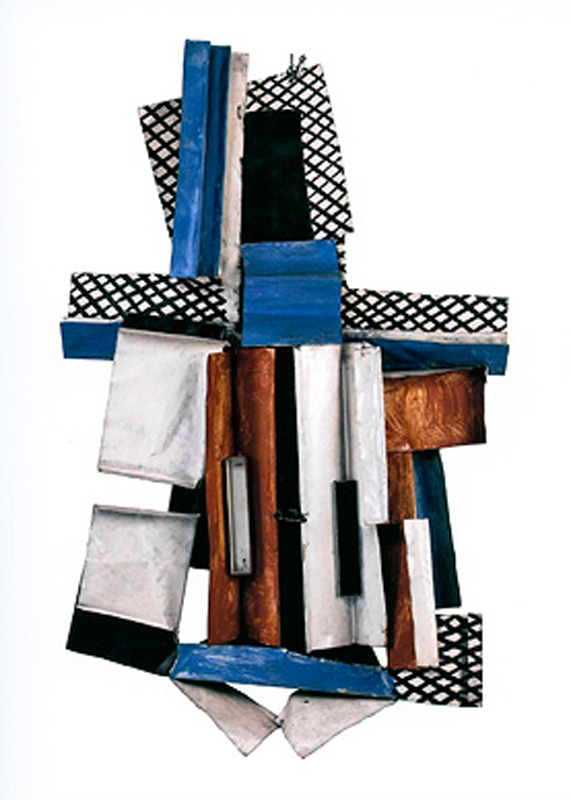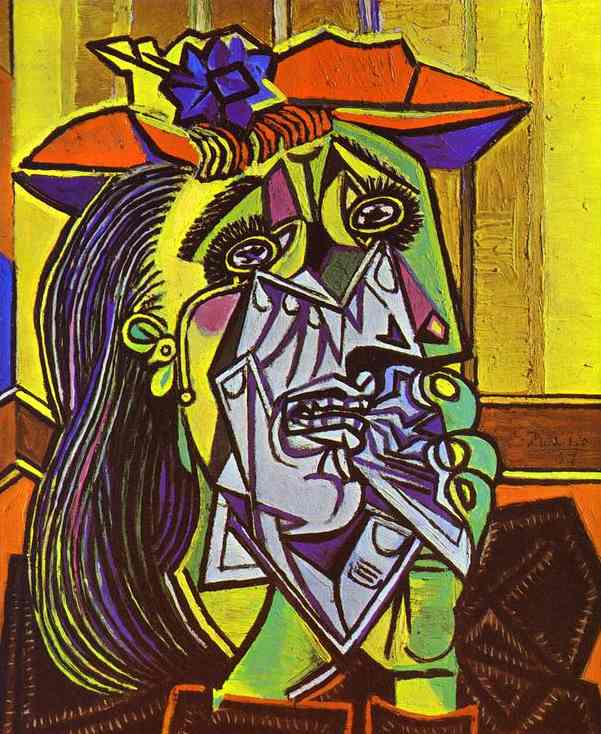The exhibition Picasso: Masterpieces from the Musée National Picasso, Paris, appeared at the de Young Museum in San Francisco June 11 through October 9, 2011. This exhibition of 150 important paintings, sculptures, prints and drawings created by Pablo Picasso (1881–1973) was drawn from the permanent collection of the Musée National Picasso, Paris, the largest and most significant repository of the artist’s work in the world, and comes to the de Young as part of an international tour. The artwork was touring because the Musée was closed and undergoing a multi-year renovation expected to last through 2012. Ranging from informal sketchbooks to finished iconic masterpieces, this unique collection of “Picasso’s Picassos” provides significant proof of the artist’s assertion that “I am the greatest collector of Picassos in the world.”
The exhibition, co-organized by the Musée National Picasso and the Fine Arts Museums of San Francisco, is part of a world tour that began in 2008 with stops at museums in Madrid, Helsinki, Moscow, St. Petersburg, Seattle, Richmond (VA), San Francisco and Sydney.
The Musée National Picasso’s collection preserves the highly personal works that Pablo Picasso kept for himself with the intention of shaping his own artistic legacy. Exhibited chronologically, covering all the phases of the modern master’s expansive eight-decade-long career and featuring the various media in which he worked, this meticulously assembled presentation included:

One of his earliest Paris works—The Death of Casagemas (1901)

The Blue period—La Célestine (1904)

The Rose period—The Two Brothers (1906)

African-inspired proto-Cubist work —studies for Les Demoiselles d’Avignon (1907) and Three Figures Under a Tree (1907)

Analytic Cubism—Man with a Guitar (1911)

Synthetic Cubism—Violin (1915)

The Neoclassical period—Two Women Running on the Beach (1922)

Surrealism—The Kiss (1925)

The war years—The Weeping Woman (1937),
and the sculptures Bull’s Head (1942) and Death’s Head (1943)

Work from his late period including the self-portrait The Matador (1970)
Picasso developed a unique personal style for each new woman in his life, and remarked, “How awful for a woman to realize from my work that she is being supplanted.” The exhibition chronicled Picasso’s tempestuous relationships with three of the significant women in his life and demonstrates how his work changed with each relationship:

His first wife Olga Khokhlova, realistically depicted in Portrait of Olga in an Armchair (1918)
Mistress Marie-Thérèse Walter, whose affair with Picasso began when she was 17, portrayed in voluptuous curves, pastel colors and soft sinuous volumes in

Reclining Nude (1932) and a series of five bronze busts created in 1931 that range from recognizable representations to the nearly abstract.
Mistress Dora Maar, the photographer whose passionate and emotionally charged relationship with Picasso was represented in works characterized by hard-edged, jagged lines, angular forms and acidic colors, such as

Portrait of Dora Maar (1937).
Sculpture played an important part in the exhibition, demonstrating Picasso’s aesthetic three-dimensionally and featuring work that spans Picasso’s career, including an early bust, The Jester (1905); Figure (1907), a roughly hewn wooden piece inspired by Picasso’s fascination with African tribal art; Head of a Woman (1909), widely considered the first Cubist sculpture; the relief construction Guitar and Bottle of Bass (1913); a multimedia assemblage, The Violin (1915); the Bull’s Head (1942), constructed from a cast-off bicycle seat and handlebars; the iconic bronze The Goat (1950); and the life-sized, six-piece figurative series created during a summer in Cannes, The Bathers (1956).
“I haven’t got a style,” Picasso claimed, but over the course of his long and prolific career, he created revolutionary works that laid the foundations of modern art.
About the Musée National Picasso
The Musée National Picasso, which opened in 1985 in the 17th-century Hotel Sale in the Marais District of Paris, serves as the repository for nearly 3,600 works from the artist’s personal collection that passed to the French government following his death in 1973.
Also in the exhibition:

Grand Nature morte au guéridon
(Large Still Life with a Pedestal Table)
Oil on canvas. 1931
Musée National Picasso, Paris
© 2011 Estate of Pablo Picasso/Artists Rights Society (ARS), New York

Paul en Arlequin (Paul as Harlequin)
Oil on canvas. 1924
Musée National Picasso, Paris
© 2011 Estate of Pablo Picasso/Artists Rights Society (ARS), New York

L’Acrobate (The Acrobat)
Oil on canvas. 1930
Musée National Picasso, Paris
© 2011 Estate of Pablo Picasso/Artists Rights Society (ARS), New York

La Lecture (Reading)
Oil on canvas. 1932
Musée National Picasso, Paris
© 2011 Estate of Pablo Picasso/Artists Rights Society (ARS), New York

Autoportrait (Self-Portrait)
Oil on canvas. 1906
Musée National Picasso, Paris
© 2011 Estate of Pablo Picasso/Artists Rights Society (ARS), New York

Chat saisissant un oiseau (Cat Catching a Bird)
Oil on canvas. 1939
Musée National Picasso, Paris
© 2011 Estate of Pablo Picasso/Artists Rights Society (ARS), New York

Le Baiser (The Kiss)
Oil on canvas. 1969
Musée National Picasso, Paris
© 2011 Estate of Pablo Picasso/Artists Rights Society (ARS), New York

Les Baigneuses (The Bathers)
Oil on canvas. 1918
Musée National Picasso, Paris
© 2011 Estate of Pablo Picasso/Artists Rights Society (ARS), New York

Nature morte au pichet et aux pommes
(Still Life with Pitcher and Apples)
Oil on canvas. 1919
Musée National Picasso, Paris
© 2011 Estate of Pablo Picasso/Artists Rights Society (ARS), New York